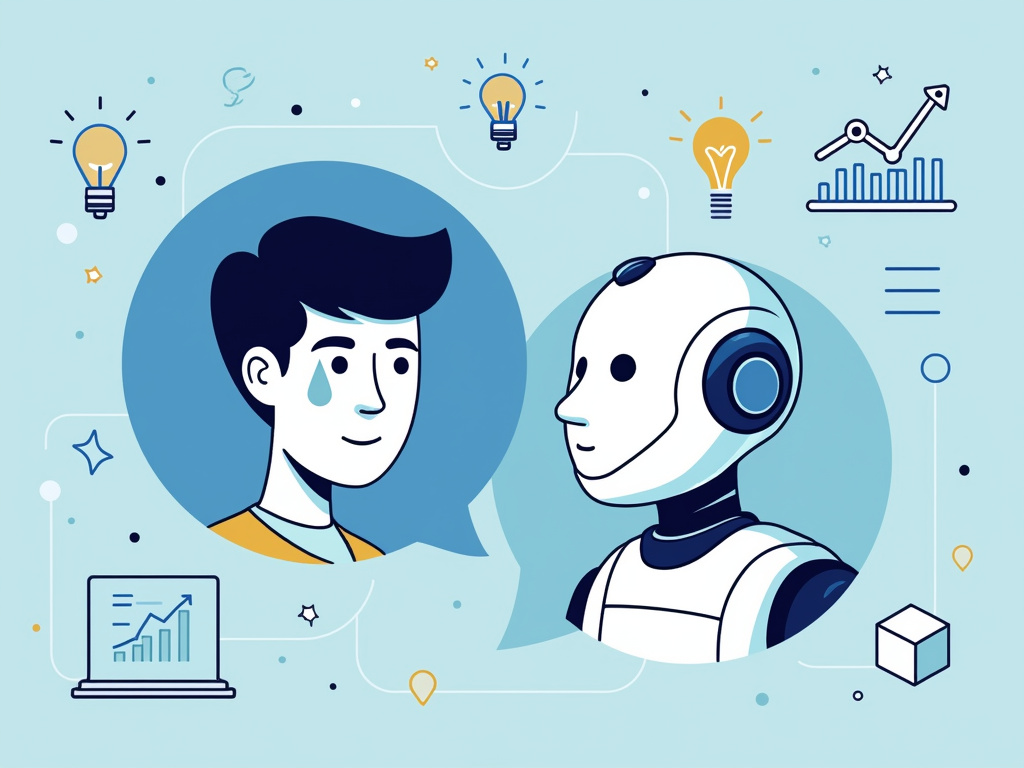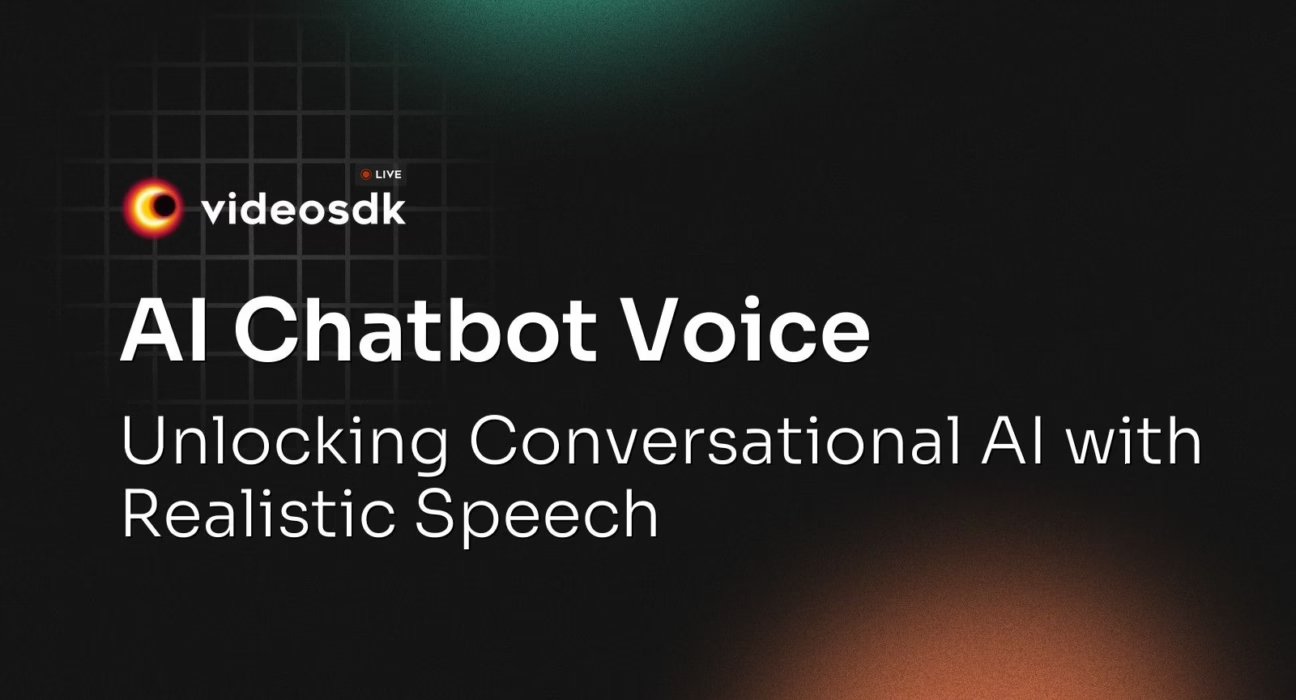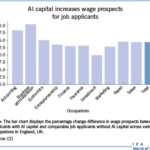The Voice of Tomorrow: How Human-Like AI Conversations Are Redefining Digital Interaction

Estimated reading time: 8 minutes
Key Takeaways
- The landscape of artificial intelligence has rapidly evolved, shifting from rigid, scripted assistants to *truly conversational, human-like partners*.
- The core focus is now on **human-like AI conversations**, emphasizing **voice realism** and genuine, contextual interaction over text-based exchanges.
- Significant **breakthroughs in AI speech generation**, including advanced neural models, multimodal training, and generative models, are powering this new era of **realistic AI voice technology** and **generative AI voice realism**.
- Applications range from personal assistants and customer service to virtual companions and revolutionary content creation, showcasing the widespread impact of these advancements.
- The future promises deeper understanding, multilingual fluency, enhanced emotional intelligence, and personalized AI interactions, with **conversational AI advancements 2025** pushing the boundaries further.
- Despite remarkable progress, challenges such as computational cost, data privacy, ethical misuse (e.g., deepfakes), and navigating social complexities remain crucial considerations.
Table of contents
- The Voice of Tomorrow: How Human-Like AI Conversations Are Redefining Digital Interaction
- Key Takeaways
- Introduction: The Dawn of Human-Like AI
- What Defines a Human-Like AI Conversation?
- The Technological Leaps Behind Voice Realism
- Current Applications: Where Human-Like AI Shines Today
- The Future Horizon: Conversational AI Advancements 2025 and Beyond
- Challenges and Ethical Considerations
- A Transformative Era in Digital Communication
- Frequently Asked Questions
Introduction: The Dawn of Human-Like AI
The journey of artificial intelligence has been nothing short of astonishing. From the rudimentary chatbots of yesteryear, constrained by rigid scripts and predictable responses, we have witnessed a phenomenal transformation. Today, AI is transitioning from mere digital tools to truly conversational, human-like partners, capable of nuanced interactions that were once the exclusive domain of science fiction. This rapid evolution signifies a profound shift in how we perceive and interact with machines, moving beyond simple command-and-response mechanisms to genuine, bidirectional dialogue.
At the heart of this revolution is the profound shift towards human-like AI conversations. This isn’t just about text-based exchanges that mimic human dialogue; it’s about pushing the frontier into **voice realism** and genuine, contextual interaction. Imagine speaking to an AI that doesn’t just understand your words but also *how* you say them—the subtle inflections, the underlying emotion, the unspoken context. This is the promise of the current wave of AI advancements, where the sound of the voice itself becomes a critical component of the interaction, making it feel organic and truly responsive.

This blog post will delve deep into this exciting domain. We will explore what truly defines a human-like AI conversation, peeling back the layers of technological marvel to reveal the breakthroughs in AI speech generation that power realistic AI voice technology and achieve unprecedented generative AI voice realism. Furthermore, we’ll examine the myriad of current applications where this technology is already making a significant impact, and cast our gaze forward to the conversational AI advancements 2025 and beyond. Finally, we’ll confront the key challenges and ethical considerations that accompany such powerful capabilities, ensuring a balanced perspective on this transformative era.
What Defines a Human-Like AI Conversation?
A human-like AI conversation is far more intricate than simply generating coherent sentences. It transcends the limitations of **scripted responses** or simplistic pattern recognition that characterized earlier AI systems. Those systems, while functional, often felt disjointed, struggling to maintain continuity or adapt to the subtle shifts in human discourse. The essence of “human-like” lies in an AI’s ability to mirror the fluidity, unpredictability, and emotional depth inherent in natural human communication.

Key qualities that define this advanced form of interaction include:
-
Understanding context: A truly human-like AI must possess the ability to not only comprehend the immediate utterance but also to remember and leverage the entire conversational history. This means drawing upon previously mentioned details, inferring unspoken intentions, and understanding how a current statement relates to past exchanges. Without this contextual memory, interactions quickly devolve into disjointed, frustrating back-and-forths.
-
Emotional nuance: Beyond just recognizing keywords, the AI needs to discern and mirror human tone, including subtle cues like hesitations, laughter, or empathy. This enables it to respond not just accurately, but *appropriately*. For instance, a sympathetic tone for a user expressing frustration, or a lighthearted tone for a joke. This emotional intelligence is crucial for building rapport and making the interaction feel genuinely human.
-
Natural flow: The AI should respond flexibly and adaptably, rather than predictably or robotically. This involves making intelligent choices about word emphasis, phrasing, and even pauses, based on subtle cues from the interaction. A natural flow means handling interruptions gracefully, allowing for tangential thoughts, and ensuring the conversation moves forward organically, rather than adhering to a rigid, pre-programmed path.
It’s vital to emphasize that simply generating fluent sentences, while impressive, is insufficient for truly human-like interaction. The challenge goes deeper. As research findings indicate, “Human-like AI needs to *feel* context, handle ambiguity, and select responses that match not only the words but the rhythm and mood of conversation” (Source). This speaks to the qualitative aspects of communication—the rhythm, the timing, the unspoken understanding—that are notoriously difficult for machines to master. The ultimate goal, then, is to create interactions that, at their best, are indistinguishable from human-to-human communication, blurring the lines in a way that fosters trust and natural engagement.
The Technological Leaps Behind Voice Realism
The remarkable realism we now experience in human-like AI conversations is a direct result of monumental breakthroughs in AI speech generation. Modern conversational AI doesn’t just synthesize words; it crafts voices with such fidelity and expressive range that they often defy distinction from human speech. This profound leap in voice realism is powered by several interconnected technical advancements, each contributing significantly to the overall authenticity of AI-driven dialogue.
At the forefront of these advancements are:

-
Advanced Neural Models: The advent of sophisticated neural network architectures, particularly Transformer models, has revolutionized speech synthesis. These models enable nuanced intonation—variations in pitch, pace, and emphasis—by analyzing vast amounts of conversational history and context in real time. Unlike older, concatenative systems that pieced together pre-recorded snippets, advanced neural models generate speech from scratch, allowing for dynamic and context-aware vocal delivery. This ability to capture and reproduce the subtle melodic contours of human speech is a cornerstone of current voice realism (Source).
-
Multimodal Training: To truly mimic human communication, AI needs more than just text. Multimodal training incorporates diverse data inputs—not just written scripts but also acoustic features, situational cues, and even emotional markers extracted from human interactions. By learning from these rich, multifaceted datasets, AI can adapt its voice output and react more naturally, choosing the right tone and pacing for a given scenario. This holistic approach is instrumental in achieving truly realistic AI voice technology, allowing AI to *feel* the context and respond accordingly (Source).
-
Generative Models: The capabilities of generative models, such as Generative Adversarial Networks (GANs) and large transformer-based Text-to-Speech (TTS) systems, have pushed the boundaries of generative AI voice realism significantly. These models don’t just reproduce speech; they synthesize unique, context-aware voice patterns that reflect subtle personality traits and speaking styles. This allows for voices that go beyond basic clarity, embodying a certain *character* or *persona* that enhances the immersive quality of the interaction. They can create vocal nuances that make an AI sound thoughtful, enthusiastic, or reassuring, rather than just mechanically articulate.
-
Emotional Speech Synthesis: A critical component of human-like interaction is the ability to convey and perceive emotion. New models are specifically designed to add or recognize emotional undertones—such as excitement, concern, irony, or even subtle hints of sarcasm. This capability provides a profoundly more authentic and relational experience, allowing AI to respond with a voice that matches the user’s emotional state or to convey its own ‘understanding’ of a situation through vocal expression.
Despite these incredible strides, a key challenge persists in breakthroughs in AI speech generation: the “one-to-many” problem. This refers to the fact that countless valid ways exist to phrase and intonate a single sentence, but only a few might fit a given conversational context or emotional state (Source). Selecting the *most appropriate* and natural-sounding response from this vast possibility space is incredibly complex. The best systems currently address this with **single-stage, context-aware architectures** that aim to generate speech directly from input text and context, rather than relying on multiple decoupled stages. However, achieving perfect coherence and situational appropriateness across all conversational turns remains an open and active area of research, continually pushing the boundaries of what is possible in AI speech synthesis.
Current Applications: Where Human-Like AI Shines Today
The theoretical advancements in human-like AI conversations are not just confined to research labs; they are actively shaping our daily interactions and professional landscapes. Realistic AI voice technology is no longer a distant dream but a present-day reality, enhancing user experience and driving efficiency across a multitude of sectors. Here are some concrete examples of where these transformative capabilities are being deployed:

-
Personal Assistants: Beyond simple task execution, today’s AI personal assistants are evolving into empathetic, engaging companions. Take, for instance, Pi by Inflection AI, which focuses on providing concise, supportive chats for personal issues. These advanced assistants offer well-being support, provide motivation, or facilitate conversational practice, making interactions feel less like talking to a machine and more like engaging with a helpful, understanding friend. This shift from functional utility to emotional resonance is critical, redefining the role of virtual assistants in our lives (Source; Source).
-
Customer Service: The realm of customer service is being profoundly revolutionized. AI agents are now capable of deftly handling inquiries, troubleshooting common issues, and escalating complex problems, thereby boosting user satisfaction. This means less time waiting on hold, more accurate information, and a more pleasant, human-centric interaction, even with a machine (Source; Source; Source).
-
Virtual Companions: For individuals seeking companionship or a non-judgmental conversational partner, AI-powered virtual companions are emerging. These tools are specifically designed for emotional support and casual conversation, offering a listening ‘ear’ and engaging in open-ended dialogue. They can provide a sense of connection, practice social skills, or simply be there for a chat, demonstrating the capacity of AI to fulfill more nuanced human needs.
-
Accessibility Tools: The impact of realistic AI voices on accessibility is immense. Creating highly authentic voiceovers or reading text aloud in natural, expressive voices for the visually impaired or those with reading difficulties significantly improves access to information and entertainment. These advancements break down barriers, providing a more inclusive digital experience where information is not just accessible, but also delivered in a comfortable, human-like manner.
-
Content Creation: In the media and entertainment industries, voice AI can generate narration or character dialogue that is nearly indistinguishable from human voices, revolutionizing media production. From realistic voices for video game characters to professional-grade narrations for documentaries, AI is enabling creators to achieve high-quality audio content with unprecedented ease and speed (Source).

These real-world examples underscore that the era of truly human-like AI conversations is not a futuristic concept, but a powerful reality already transforming how we interact with technology and each other. The continuous refinement of realistic AI voice technology promises even more sophisticated and impactful applications in the near future.
The Future Horizon: Conversational AI Advancements 2025 and Beyond
As we stand on the precipice of remarkable innovation, the future of AI promises even more profound shifts in how we interact with technology. Looking ahead to conversational AI advancements 2025 and beyond, we can forecast a new wave of capabilities that will further blur the lines between human and machine communication. The trajectory is clear: AI will become even more perceptive, adaptable, and emotionally intelligent.
The next wave of capabilities will likely include:

-
Deepened Understanding: Future models will grasp even more context, seamlessly handling intricate follow-up questions, smoothly shifting topics, and navigating complex conversational turns without losing coherence. This means AI will not just remember facts, but truly *understand* the underlying narrative and intent of a prolonged discussion, making interactions feel incredibly natural and intuitive. This deeper contextual awareness is crucial for transcending transactional exchanges and enabling truly profound conversations (Source).
-
Multilingual, Code-Switching Fluency: Imagine an AI that can effortlessly switch between languages mid-sentence, understanding and responding in multiple dialects or accents with native fluency. Real-time language switching and nuanced dialectical understanding will become mainstream features, enabling seamless global communication and breaking down linguistic barriers in personal and professional contexts. This will open up entirely new avenues for international collaboration and individual connectivity.
-
Enhanced Emotional Intelligence: Building on current capabilities, AI will develop a far more sophisticated capacity to detect and adapt to human emotional states. This means responding with greater empathy, providing support that feels genuinely caring, or even subtle humor that lands perfectly. This enhanced emotional intelligence will make interactions not only more pleasant but also more effective, especially in sensitive applications like mental wellness support or difficult customer service scenarios.
-
Personalization at Scale: The future promises highly personalized AI interactions. AI voices and styles will mold themselves to user preferences almost instantly, becoming, for all practical purposes, “bespoke” conversational partners. Users might be able to select an AI voice that perfectly matches their preferred accent, tone, or even speaking pace, creating an unprecedented level of comfort and engagement. This level of customization will make AI feel less like a generic tool and more like an extension of the individual user.
These ambitious forecasts are fueled by ongoing research and development, continuously driving the next wave of breakthroughs in AI speech generation and relentlessly pushing the boundaries of generative AI voice realism. On the research side, **multimodal and single-stage conversational models** are at the vanguard, striving for both unprecedented scalability and unparalleled expressiveness in AI-generated speech (Source). These architectural innovations are designed to overcome the “one-to-many” problem, generating responses that are not just linguistically correct but also perfectly attuned to the conversational context and emotional undertones.
Industry trends firmly forecast generative AI voice realism exceeding the uncanny valley (Source), the point where synthetic voices become unsettlingly close to human but still subtly unnatural. Once this threshold is consistently crossed, the boundary between bot and person will significantly blur, profoundly reshaping our expectations for digital communication. Envision how these advancements will further integrate human-like AI conversations into every facet of daily life and across various industries, from hyper-personalized personal assistance and immersive entertainment to highly efficient and empathetic professional applications. The possibilities are truly boundless.
Challenges and Ethical Considerations
Despite the remarkable strides in human-like AI conversations, the path forward is not without significant hurdles and pressing ethical concerns. As AI becomes more sophisticated and deeply integrated into our lives, addressing these challenges responsibly becomes paramount to ensuring its beneficial deployment. The rapid pace of innovation necessitates careful consideration of the potential downsides and proactive measures to mitigate risks (Source).
Key challenges that demand our attention include:

-
Computational Cost: Simulating natural, contextually aware speech and maintaining sophisticated contextual awareness demands substantial hardware resources and immense energy consumption. This high computational cost poses a significant challenge for scalability, particularly for widespread, real-time deployment. Developing more efficient algorithms and specialized hardware will be crucial to making these advanced AI systems accessible and sustainable globally (Source).
-
Data Privacy and Security: AI systems trained on vast amounts of human conversation—which often include sensitive personal information—must rigorously protect user data. Ensuring robust data privacy and security measures is not just a regulatory requirement but a fundamental ethical imperative. Preventing unauthorized access, data breaches, and misuse of conversational data is critical to maintaining public trust and safeguarding individual rights (Source).
-
Ethics and Misuse: The sophistication of realistic AI voice technology raises profound ethical concerns, particularly regarding the potential for malicious use. The creation of deepfake audio or highly convincing voice impersonations presents a serious threat, capable of spreading misinformation, committing fraud, or damaging reputations. This necessitates the development of robust authenticity detection mechanisms, transparent labeling of AI-generated content, and clear regulatory frameworks to prevent and penalize misuse. Society must grapple with the implications of AI that can mimic human voices so perfectly.
-
Social Complexity: AI must learn to navigate the intricate tapestry of complex cultural norms, subtle humor, and unspoken social cues that are integral to human communication. Misunderstandings can easily arise if an AI fails to pick up on sarcasm, irony, or cultural sensitivities, leading to unintended offense or a breakdown in communication. Ensuring AI behaves ethically and respectfully in diverse social contexts requires massive, diverse training datasets and sophisticated models capable of truly understanding human social dynamics, a challenge that goes far beyond mere linguistic processing.
Addressing these multifaceted challenges will require a concerted effort from researchers, policymakers, and society at large. The goal is not merely to create powerful AI, but to create AI that is *responsible*, *trustworthy*, and *beneficial* to all.
A Transformative Era in Digital Communication
We have journeyed through the remarkable evolution of artificial intelligence, from its humble beginnings as rudimentary chatbots to today’s highly sophisticated human-like conversational partners. This journey highlights an unprecedented acceleration in AI capabilities, fundamentally reshaping our interactions with digital entities. The progress is not just incremental; it represents a paradigm shift in how we conceive of human-computer interaction.
The transformative potential of the latest realistic AI voice technologies and generative models cannot be overstated. They are delivering immersive, emotionally resonant interactions that were once the stuff of futuristic dreams. These technologies are enabling conversations that feel genuinely natural, intuitive, and even empathetic, moving beyond mere information exchange to truly meaningful dialogue.
As we keenly approach conversational AI advancements 2025, the continuous breakthroughs in AI speech generation and the unwavering pursuit of ultimate generative AI voice realism promise to fundamentally reshape customer engagement, enhance accessibility for diverse populations, revolutionize entertainment experiences, and profoundly alter the very fabric of digital communication. The impact will be felt across every industry and in countless aspects of our daily lives, making interactions with technology seamless and increasingly indistinguishable from human conversation.
The exciting challenge and profound promise for researchers and society alike is to not only make powerful conversational AI more human but also to ensure it is trustworthy, transparent, and universally beneficial (Source; Source; Source). This means balancing innovation with responsibility, ensuring that as AI becomes more lifelike, it also upholds ethical principles and serves the greater good. The era of truly human-like AI is here, and its potential to enrich and transform our world is immense, provided we navigate its development with foresight and integrity.

Frequently Asked Questions
-
Q: What does “human-like AI conversation” truly mean?
A: It means AI capable of understanding context, recognizing emotional nuance, and maintaining a natural conversational flow, moving far beyond scripted responses. The goal is an interaction that feels intuitive and indistinguishable from talking to another human.
-
Q: How does AI achieve such realistic voices?
A: Through advanced neural models (like Transformers for intonation), multimodal training (incorporating acoustic and emotional cues), and generative models (GANs, advanced TTS) that synthesize unique, context-aware voice patterns reflecting personality.
-
Q: What are the main applications of this technology today?
A: Current applications include highly engaging personal assistants, empathetic customer service agents, virtual companions for support, advanced accessibility tools (like natural voiceovers), and revolutionizing content creation for media and entertainment.
-
Q: What are the biggest challenges facing human-like AI?
A: Significant challenges include the high computational cost for training and deployment, ensuring robust data privacy and security, addressing ethical concerns around deepfakes and misuse, and enabling AI to navigate complex social and cultural nuances.
-
Q: Will AI voices become indistinguishable from human voices by 2025?
A: Industry trends suggest that generative AI voice realism will consistently exceed the “uncanny valley” by 2025, significantly blurring the distinction. While perfect indistinguishability in *all* contexts remains a research goal, the level of realism will be incredibly high.





